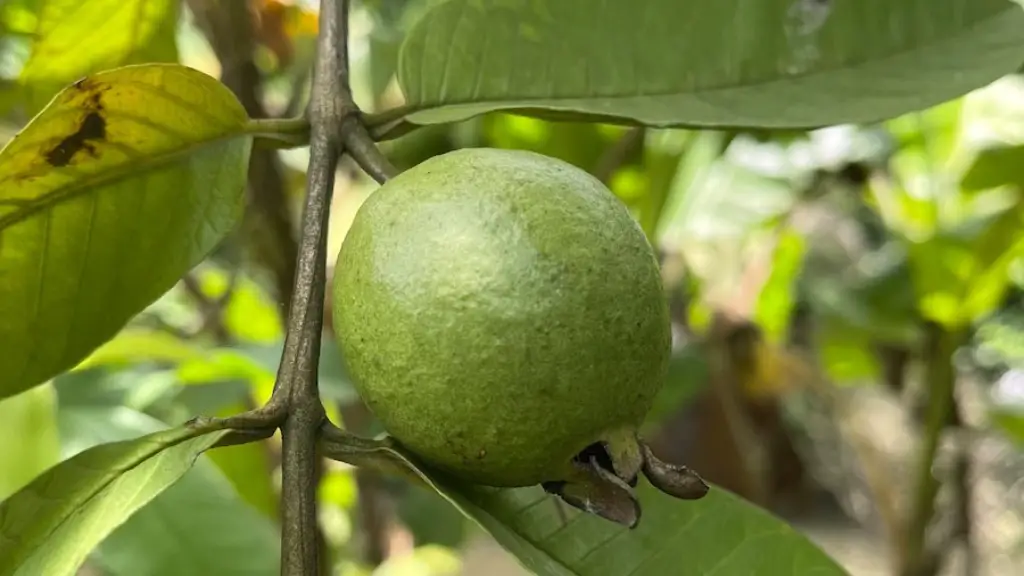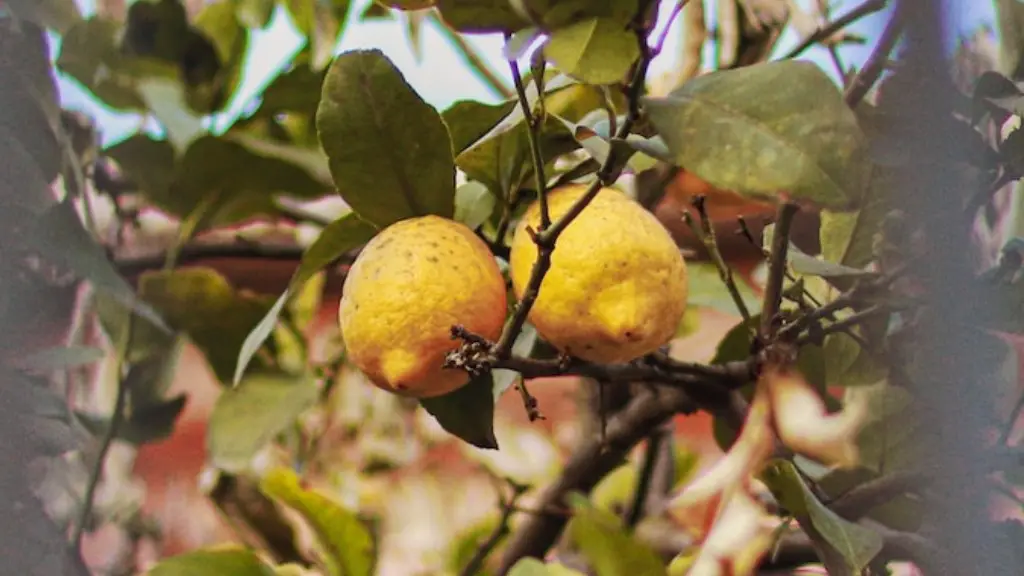Avocado trees (Persea americana) are a kind of evergreen tree native to Central and South America. These trees are cherished for their nutritious fruit, or avocado, and are grown in regions around the world.
The exact depth of avocado tree roots remains a scientific mystery. Generally, avocado roots can grow up to 15 feet deep and can extend even wider than the width of the tree’s trunk. However, the average depth of avocado roots could vary depending on several factors, such as soil fertility, depth of the soil water table, root competition and others.
Root systems are very important for avocado trees, as they enable the trees to access water and minerals from the soil. They absorb water and to get the nutrients in the soil for their growth and fruit production. The longer an avocado tree’s root system grows and penetrates the soil, the more nutrients and water it can acquire, leading to larger fruit and healthier tree life.
A study conducted by the University of California has suggested that avocado trees possessing older, thicker root systems can handle a drier climate, which is essential in many areas.
Experts have also determined that the type of soil that these trees are planted in, can have an effect on the depth of root penetration. If the soil is non-porous, like heavy clay, then the roots will not be able to stretch very deep. On the other hand, if the soil is sandy and loose, then the roots will tend to be deeper.
Planting the avocado trees in good quality soil and providing them with adequate irrigation will help maximize root penetration. Placing them further away from other trees can also be advantageous as it gives the roots more space to stretch and will reduce competition.
Finally, careful pruning of the roots can be beneficial for avocado tree health. Pruning will help with root growth and development, as roots usually spread in the shape of a cone and can wander beneath neighbor’s yards if not moderated. Pruning the roots can also be helpful in controlling the size and shape of the tree.
Avocado Size
How deep the roots are planted can have an effect on the size of the avocado fruit. Generally, when there is adequate water and nutrients available in the soil, the size of the fruit will increase. Taking into consideration the factors discussed above can help to maximize the output of Avocado fruits.
Apart from the quality of the soil, proper fertilization can also be a great way to aid with the size and number of fruits produced by the tree. Feeding avocado trees the right nutrients, including certain minerals such as nitrogen, zinc, and boron, can lead to optimum fruit production.
Providing enough space for roots to stretch and branch out is also an effective way of increasing the size and yields of avocados. When planting avocado trees, it is recommended to put them further away from other trees so that their root system can develop deep and wide without competition.
Finally, regular pruning and harvesting process can help stimulate full fruit ripening. Avocado trees should be pruned and the mature fruit should be harvested when the produce is at the right time so that other fruits will reach its optimal size.
Transplant Shock
When it comes to transplanting an avocado tree, special attention should be taken to help reduce transplant shock caused by moving a mature tree from one location to another. This process can help to reduce the extent of the potential damage caused to the root system.
It is best to transplant an avocado tree in the right season, when temperatures outside are mild. Special care should be taken to dig as much of the root ball as possible and then replant the tree at the same depth as it was before.
After transplanting, it is important to water the tree well using shallow, frequent irrigation sessions. This can help the tree get started in its new environment and will reduce the amount of transplant shock.
By providing the avocado tree with proper fertilization, it can start its new life with better chance for success. Fertilizing the soil with a balanced fertilizer will give it the needed minerals and nutrients to grow in its new location.
Finally, a good amount of mulch covering the top layer of the soil can aid with an easier transition after transplanting the tree. The mulch will help retain the soil’s moisture and keep weeds away.
Moisture Levels
Within soil moisture levels, when it comes to the roots of an avocado tree, two different measurements may be taken. Field capacity is the amount of moisture that is held within the soil after it has been fully and thoroughly drained. Wilting point is the amount of moisture remaining in the soil when the plants’ leaves won’t be able to recover and the roots can no longer take up moisture.
When it comes to the avocado roots, proper soil moisture is essential for their proper and successful growth. The ideal soil moisture levels should be slightly below field capacity to encourage deeper roots and overall better fruit production.
One helpful measure in keeping the soil in proper balance is using a soil moisture meter. This tool can provide an accurate reading of how much moisture is present in a certain area and can signal when more water is needed.
Finally, adding compost and organic materials to the soil can keep the moisture content in balance and can also provide beneficial nutrients for the tree. The compost will also help with air circulation in the soil, and can lead to healthier roots.
Overall Health and Care
Overall, avocado trees require a good amount of care and attention if you want them to bear tasty fruit. Adequate and timely watering, as well as proper fertilization, will aid in growing a bigger and healthier tree.
Pruning the trees regularly is also essential and will benefit the health of the tree in the long run. Doing so will help to raise the fruiting wood and promote the growth of new wood, which will increase the production of fruit.
It can also be advantageous to mulch the area around the tree. Mulching helps hold moisture and keeps the soil temperature consistent. It also helps reduce soil evaporation, weed growth and can add nutrients to the soil as it decomposes.
Finally, regularly monitoring the soil can help to increase yield and also to keep the tree’s overall health in check. Making sure that the moisture and nutrient levels of the soil are balanced is essential for the avocado tree to be productive.




